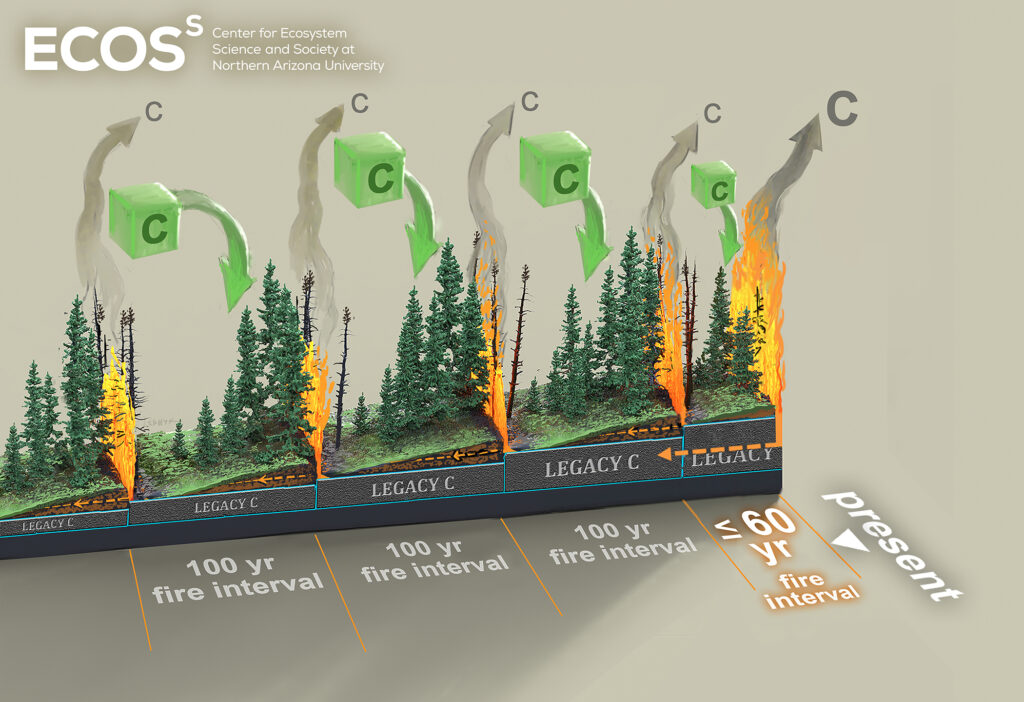Overarching Objective:
Assess where and how rapidly Arctic ecosystems are shifting from a net carbon (C) sink to a net C source via increasing wildfires and the combustion of organic soil legacy C.
What is organic soil legacy C?:
Carryover pools sequestered over past disturbance cycles.
Focal areas to address the overarching objective:
1. Determine the distribution of legacy C on the landscape and its vulnerability to combustion from wildfires in Interior Alaska where the frequency of fires and the proportion of forests burning at a young age has increased in recent decades.
2. Use newly developed geospatial models of fire severity and carbon combustion to spatially interpolate the frequency of legacy C combustion from 2001-2021 throughout boreal Alaska.
3. Test if our understanding of the controls on legacy C combustion is applicable across a wide range of burned boreal and tundra study systems throughout the circumpolar region by collaborating with 12 distinct research groups who will collect soil samples from recently burned boreal and tundra sites.
Research Questions:
1. Which ecosystems in Interior Alaska are most likely to accumulate legacy C?
2. Which ecosystems in Interior Alaska are most likely to switch from a net C sink to a net C source via the combustion of legacy C?
3. How frequent is the threshold change from a net C sink to a net C source throughout Interior Alaska at the landscape scale?
4. How frequent is legacy C combustion and the threshold change from sink to source across a diverse array of ecosystems in the circumpolar region?


